Hong Kong is renowned for be a uniquely global business city, strategically located in the heart of Asia. With a population of almost 7 million, and a per capita GDP of US$43,700 (CIA World Fact Book 2008), it is clear that Hong Kong's business environment is thriving. Hong Kong has a stable economy and a Chinese perspective, and consistently plays a key role for international entrepreneurs accessing the Chinese economy. Taking a look at key areas of consideration for international business entrepreneurs, demonstrates why Hong Kong is and will remain a popular and invaluable jurisdiction.
Location
As two thirds of the global middle class will soon be from Asia, entrepreneurs from all over the world are taking interest in the continent, and being in the heart of Asia, Hong Kong is often a first choice. Hong Kong is within four hours flight from all of Asia's key regional markets.
Strategically-located in close proximity to China, Hong Kong also plays a vital role in accessing the Chinese market. Indeed, Hong Kong has taken various measures to position itself as a gateway to China with developments like the Shenzhen-Hong Kong Innovation Circle that encourages Chinese enterprises to undertake scientific research in Hong Kong. More obviously, Hong Kong's location being one hour's drive from the Pearl River Delta, the world's largest manufacturing region, gives Hong Kong access to the 450 million people consumer market in Southern China alone.
With Hong Kong's Closer Economic Partnership Arrangement (CEPA) with China, it is undoubtedly the most business friendly economy from which to take advantage of Asia's future opportunities.
Transport
Companies that incorporate in Hong Kong have access to its developed air, rail, road and sea links, that are both modern and efficient. Hong Kong's international airport is the busiest in all of Asia and the Pacific, handling almost 50 million passengers annually and hosting direct flights to over 150 international destinations. Transit between the city and the airport is convenient via the Airport Express, which takes a total of 23 minutes to Central. Furthermore, general commuting within Hong Kong is judged to be the best in the world by Forbes Magazine as taxis are affordable and public transport is well developed.
From a commercial perspective, Hong Kong's international cargo air port is the world's busiest and the Hong Kong international container port is the world's 3rd busiest. Over 100 international shipping lines operate from Hong Kong, connecting to over 5,000 destinations worldwide. A new rail link is in the process of development, names the Guangzhou-Shenzhen-Hong Kong Express Rail Link, and it will halve current journey times between Hong Kong and Guangzhou. Furthermore, Wuhan will be 5 hours from Hong Kong and Shanghai will be 8.
Culture
Hong Kong's history as a British colony and its current Chinese influences provide a bi-culture of two of the most dominant world economies today. The British influence within a Chinese culture is a significant business advantage, facilitating international entrepreneurs' understanding of the biggest Asian market, whilst avoiding dramatic culture shocks. Hong Kong is also home to a large expatriate community of about 350,000 people and 29 million international tourists annually, allowing for a diverse and open-minded population throughout the year.
The Hong Kong people have grown up in this bi-cultural and international environment and have picked up on key business customs from the western and eastern worlds. Hong Kong universities are increasing in the world rankings, with three universities in the top 50 worldwide, more than any other country in Asia. With their strong work ethic, a knack for efficiency and a can-do attitude, Hong Kong provides a motivated and skilled workforce for any business. Industrial action is indeed very rare.
English and Chinese are the official languages in Hong Kong, and in the work place, English is the common language of business with most contracts written in English.
The overall culture of the Hong Kong people is business-oriented and highly competitive. This culture is supported not only by the people but through the government, as the HK Trade Development Council supports SMEs in their international ventures, and immigration policies are structured to attract professionals, talents and investors globally, to maintain Hong Kong's competitiveness.
Policy and Taxes
In light of the fore stated business culture prevalent in Hong Kong, there is a logically business-friendly tax and legal infrastructure.
Hong Kong is ranked as the world's freest economy by the Heritage Organization's 2009 Index of Economic Freedom and is also the 12th least corrupt country in the world (Transparency International – Corruption Perceptions Index 2008). As a whole, Hong Kong is a secure, efficient and reliable jurisdiction to conduct international business.
Companies that incorporate in Hong Kong also benefit from its low and simple tax system. With corporate taxes limited to a maximum of 16.5% and income tax peaking at 15%, despite having few established double tax treaties, Hong Kong has the 3rd lowest tax misery in the world, as rated by Forbes' Tax Misery Index. Furthermore, in spite of Hong Kong's recent agreements to commit to OECD tax principles, their client confidentiality guidelines remain strong.
Hong Kong people also benefit from having no sales tax, capital gains tax or dividends tax and ultimately, despite providing such significant tax benefits, a Hong Kong offshore company is not perceived to be an international tax haven.
Current Business
Being the world's 2nd most competitive economy (IMD's 2009 World Competitiveness Yearbook) and the 2nd largest recipient of foreign direct investment (FDI) (United Nations Conference on Trade and Development – UNCTAD) places Hong Kong as one of the most important business centers in Asia. The government plays a key role in Hong Kong's competitiveness, and has implemented strong measures to encourage not only the world's biggest economies, but also more businesses from emerging markets to invest in HK.
Incidentally, Hong Kong holds impressive awards and rankings such as being the most business efficient, the 2nd most government efficient and the 3rd most economically efficient in the world (IMD World Competitiveness Yearnook). Hong Kong also ranks as having the 2nd lowest business costs and risks in the world (Milken Institute's Opacity Index). For these reasons it is not surprising that Hong Kong is the number one location for regional operations in Asia, with 1,252 regional headquarters and 2,328 regional offices.
Hong Kong is also a major and global financial powerhouse. In 2006 the Hong Kong Stock Exchange raised US$32 billion, amounting to 15% of total global capital raised, and higher than the capital raised in the London Stock Exchange and the New York Stock Exchange that same year. Hong Kong ranks as 3rd in the Global Financial Centres Index (GFCI), after London and New York, and is therefore the financial capital of Asia.
Hong Kong also has a major presence in the technology field, being the premier digital city and telecommunications hub of Asia. The government is continuously promoting high valued, original and high technology activities to leverage on its strong services and manufacturing sectors from the Pearl River Delta. The Hong Kong Science and Technology Parks (HKSTP), a state-of-the-art research and technology infrastructure, and Cyberport, a US$2 billion project for enterprise and professional development, further support Hong Kong's leading role in IT.
Company Incorporation
Incorporating a business in Hong Kong is not only a wise business decision but also simple and cost-effective. Hong Kong proudly ranks as the 4th easiest place to do business by the World Bank's Doing Business Survey (2009) and it can take as little as 2 weeks to legally incorporate a Hong Kong company.
Global corporate bank accounts are readily available and there is no requirement to rent a physical office to complete formation, virtual offices are also permissible. The main requirements for Hong Kong company formation are to have at least one company director, who can be from anywhere in the world, and a Hong Kong resident company secretary (the director and secretary cannot, however, be the same person). Although annual audited financial statements are a requirement for HK businesses, quarterly reports are not necessary, thus maintaining the security of Hong Kong business whilst being user-friendly.
With a minimum issued capital requirement of one share at HK$1, Hong Kong company incorporation is indeed a viable option for almost any entrepreneur.
Living
Whilst Hong Kong is an extremely cheap palce to do business, it is however a very expensive place to live. The Mercer Human Resources Cost of Living Survey ranks HK as the 6th most expensive nation in the world to live in. That being said, as Hong Kong's GDP per capita is high, cost of living is often not a critical problem for most residents.
Hong Kong residents benefit from a modern and well developed infrastructure, as US$7.8 billion has been invested into Hong Kong over the past ten years. Projects like the government's ‘go wireless stay connected' initiative have improved facilties for people living in Hong Kong, with over 7,900 WiFi hotsports available in public libraries, recreational and cultural venues and even major parks.
Hong Kong also boasts one of the lowest crime rates in the world, outperforming many other international cities. The HK electricity grid is reliable and state-of-the-art, and blackouts do not occur. Utilities are not only reliable but also affordable. With an immigration policy that is family friendly, and with a vast expat community, it is easy to meet new people and make friends in Hong Kong. Private clubs, chambers, consulates, associations, special interest groups and networking clubs are of the many ways for expats to meet other foreign nationals. In this way, despite its high cost of living, Hong Kong has achieved a score or 90.9 out of 100 in the Economist Intelligence Unit liveability survey.
With its business oriented culture, strong work ethic and international and bi-cultural background, Hong Kong is a prime location for any entrepreneur to set up their business, while benefiting from low taxes and easy access to the booming China economy. Hong Kong is an Asian leader in the finance industry and IT field, as well as holding impressive world rankings for ease of business and freedom from corruption. Overall, Hong Kong ticks all the boxes for entrepreneurs looking for a sensible and enjoyable jurisdiction to set up their company and possibly live in.
Healy Consultants is a leading corporate services firm that assists entrepreneurs and investors with their company incorporation requirements. The firm provides a range of services including Hong Kong Company Formation, tax planning and offshore investing. More information on company incorporation can be found by visiting http://www.healyconsultants.com
Article Source: http://www.articlesbase.com/entrepreneurship-articles/incentives-to-incorporate-in-hong-kong-why-to-form-a-company-in-hong-kong-1440847.html
About the Author
Melissa Glotzer is a Marketing Assistant at Healy Consultants. She is a graduate of the University of Manchester Business School with a BSc (Honours) in Management with Accounting and Finance.


 As the economic and financial center in East Asia, Hong Kong enjoys all the benefits of a dynamic and vibrant metropolis.
As the economic and financial center in East Asia, Hong Kong enjoys all the benefits of a dynamic and vibrant metropolis.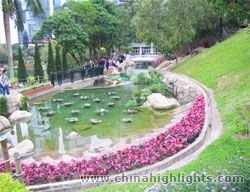 Hong Kong Park is a small public city park on Hong Kong Island in Central. It is surrounded on one side by the skyscrapers and on the other side by Victoria Peak. But in the small 8 hectare (20 square acres) space between Cotton Tree Drive and Kennedy Road, the Hong Kong Provisional Urban Council and the Hong Kong Jockey Club opened this park in 1991. It is free and attracts a million visits a year. In the big garden is a pond that covers a former tennis court, waterfalls or rapids and several important facilities including a sports facility, a big aviary, museums, a plant conservatory and a children's playground. The park has won several awards including one from the United State Urban Services Department for its excellent design and facilities in the crowded urban area. The aviary is a walk through aviary. This means that you can walk on a walkway through the tree canopy so that you can see the birds flying around inside up close. The little Hong Kong Park has a lot of interesting attractions crammed into it and is a major highlight of a visit to Hong Kong Island.
Hong Kong Park is a small public city park on Hong Kong Island in Central. It is surrounded on one side by the skyscrapers and on the other side by Victoria Peak. But in the small 8 hectare (20 square acres) space between Cotton Tree Drive and Kennedy Road, the Hong Kong Provisional Urban Council and the Hong Kong Jockey Club opened this park in 1991. It is free and attracts a million visits a year. In the big garden is a pond that covers a former tennis court, waterfalls or rapids and several important facilities including a sports facility, a big aviary, museums, a plant conservatory and a children's playground. The park has won several awards including one from the United State Urban Services Department for its excellent design and facilities in the crowded urban area. The aviary is a walk through aviary. This means that you can walk on a walkway through the tree canopy so that you can see the birds flying around inside up close. The little Hong Kong Park has a lot of interesting attractions crammed into it and is a major highlight of a visit to Hong Kong Island.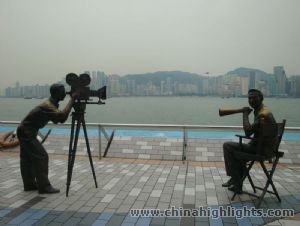 The Avenue of Stars is basically a sidewalk on the shore of Hong Kong's Victoria Bay that is modeled after the Hollywood Walk of Fame. The sidewalk and pedestrian area has the handprints and signatures of famous Hong Kong actors such as Jackie Chan and metal sculptures of Hong Kong actors or film industry figures such as Bruce Lee. It stretches for about 440 meters along the shoreline, and there are benches and decorative plants. To keep people from falling into the ocean below, there is a metal handrail along the sidewalk. Some local people go there to enjoy the sight of the bay and the passing ships, jog, and enjoy the harbor air, and tourists go to see the light show at night and to take photographs. This sidewalk attracts a lot of mainland Chinese. You can see most of the tall buildings on Hong Kong Island here, and at night as part of the light show, music and dialogue are played.
The Avenue of Stars is basically a sidewalk on the shore of Hong Kong's Victoria Bay that is modeled after the Hollywood Walk of Fame. The sidewalk and pedestrian area has the handprints and signatures of famous Hong Kong actors such as Jackie Chan and metal sculptures of Hong Kong actors or film industry figures such as Bruce Lee. It stretches for about 440 meters along the shoreline, and there are benches and decorative plants. To keep people from falling into the ocean below, there is a metal handrail along the sidewalk. Some local people go there to enjoy the sight of the bay and the passing ships, jog, and enjoy the harbor air, and tourists go to see the light show at night and to take photographs. This sidewalk attracts a lot of mainland Chinese. You can see most of the tall buildings on Hong Kong Island here, and at night as part of the light show, music and dialogue are played.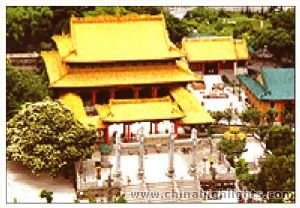 It is the oldest temple in Hong Kong in the Mid-levels area of Hong Kong Island. It is half the way up Victoria Peak. In the temple, two idols are worshiped, the God of Literature and the God of War. It was built in 1847. People go to the Man Mo temples in China to pray for success in examinations or in their academic or literary endeavors. They also go to Man Mo temples to settle disputes. A bronze bell there was also made in 1847. Though it has been often renovated, the original appearance is preserved, and it is visited by lots of people.
It is the oldest temple in Hong Kong in the Mid-levels area of Hong Kong Island. It is half the way up Victoria Peak. In the temple, two idols are worshiped, the God of Literature and the God of War. It was built in 1847. People go to the Man Mo temples in China to pray for success in examinations or in their academic or literary endeavors. They also go to Man Mo temples to settle disputes. A bronze bell there was also made in 1847. Though it has been often renovated, the original appearance is preserved, and it is visited by lots of people.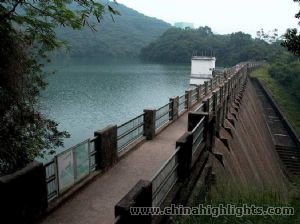 Aberdeen Harbor is on the southern side of Hong Kong Island. It is on the other side of Victoria Peak from the main Hong Kong urban area. Aberdeen is the largest town on Hong Kong Island outside the main urban area, and the harbor was famous as the place where the Hong Kong boat people lived in the 1960s and 1970s. Movies such as a James Bond movie and a Bruce Lee movie were filmed there, so the harbor is recognized world wide. Now, the harbor area is mainly an anchorage for the yachts and pleasure boats of the Hong Kong suburban dwellers in the area. But there are still some famous floating restaurants and local fisherman using the bay, so it is a place to go for seafood on a boat and to see the scenery and the area tourist destinations like Hong Kong Ocean Park.
Aberdeen Harbor is on the southern side of Hong Kong Island. It is on the other side of Victoria Peak from the main Hong Kong urban area. Aberdeen is the largest town on Hong Kong Island outside the main urban area, and the harbor was famous as the place where the Hong Kong boat people lived in the 1960s and 1970s. Movies such as a James Bond movie and a Bruce Lee movie were filmed there, so the harbor is recognized world wide. Now, the harbor area is mainly an anchorage for the yachts and pleasure boats of the Hong Kong suburban dwellers in the area. But there are still some famous floating restaurants and local fisherman using the bay, so it is a place to go for seafood on a boat and to see the scenery and the area tourist destinations like Hong Kong Ocean Park.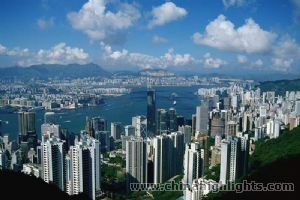 Victoria Peak is the highest peak in Hong Kong Island with an altitude of 554 meters and has been considered as a landmark of the island.
Victoria Peak is the highest peak in Hong Kong Island with an altitude of 554 meters and has been considered as a landmark of the island.